Discover the full potential of your Android phone with the strategic use of Safe Mode. In this brief yet comprehensive guide, we’ll take you through the simple steps to enable or disable Safe Mode on your Android phone. Whether you’re troubleshooting issues, pinpointing problematic apps, or aiming to enhance overall performance, our step-by-step walkthrough ensures you have complete control. Let’s dive in!

What is Safe Mode?
Safe Mode is a critical tool on Android phones, designed for troubleshooting issues. In this mode, your phone runs with essential system software only, excluding third-party apps. It helps identify whether problems like crashes or freezes stem from pre-installed software or external apps. Think of Safe Mode as a diagnostic ally, allowing you to pinpoint and fix issues effectively.
In the following sections, we’ll guide you through the quick steps of entering and exiting Safe Mode, providing insights into when and why you should leverage this feature for a smoother Android experience.

How to Enable Safe Mode on Android Phones
1. Turning On Safe Mode on Stock Android Phones
For users with stock Android phones, accessing Safe Mode is a straightforward process:
1. Power Off Your Phone: Press and hold the power button until the power-off screen appears.
2. Long-Press the Power Off Option: On the power-off screen, long-press the “Power Off” or “Restart” option until a pop-up prompt appears.
3. Confirm in Safe Mode: When the prompt appears, select “Reboot to Safe Mode” and confirm.
4. Wait for Restart: Your phone will restart in Safe Mode, indicated by a watermark on the screen. In this mode, only essential system apps are active.
2. Turning On Safe Mode on Samsung Phones
If you own a Samsung phone, the process to enable Safe Mode may vary slightly. The easiest method is as stated below:
1. Press and hold the power button until the screen with the “Power off,” “Restart,” and “Emergency call” buttons appear.
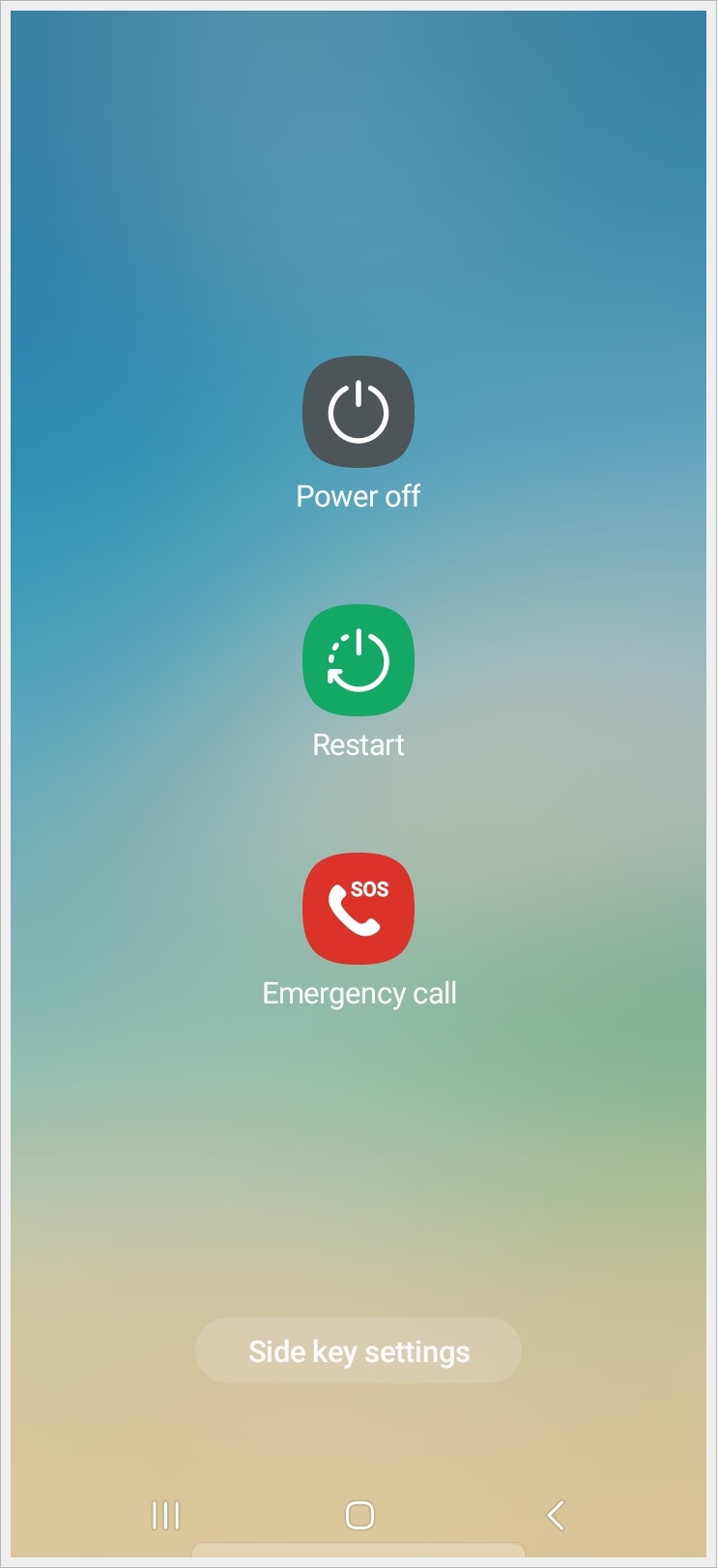
2. Press and hold the “Power off” button.
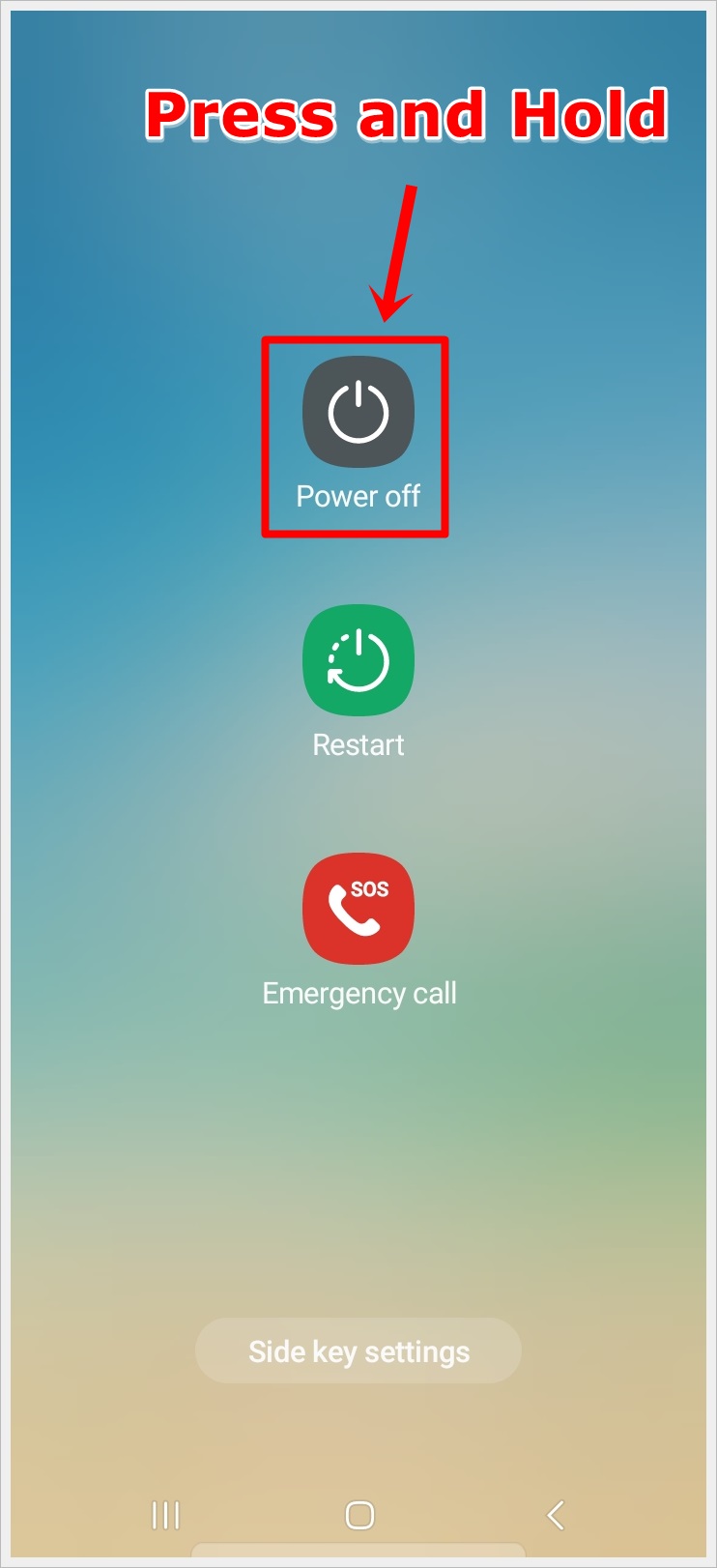
3. The screen with the “Safe mode” icon will appear. Tap the “Safe mode” icon to restart your phone in Safe Mode.

4. After the restart, your phone will display the “Safe Mode” watermark in the bottom-left, indicating it’s now in Safe Mode.
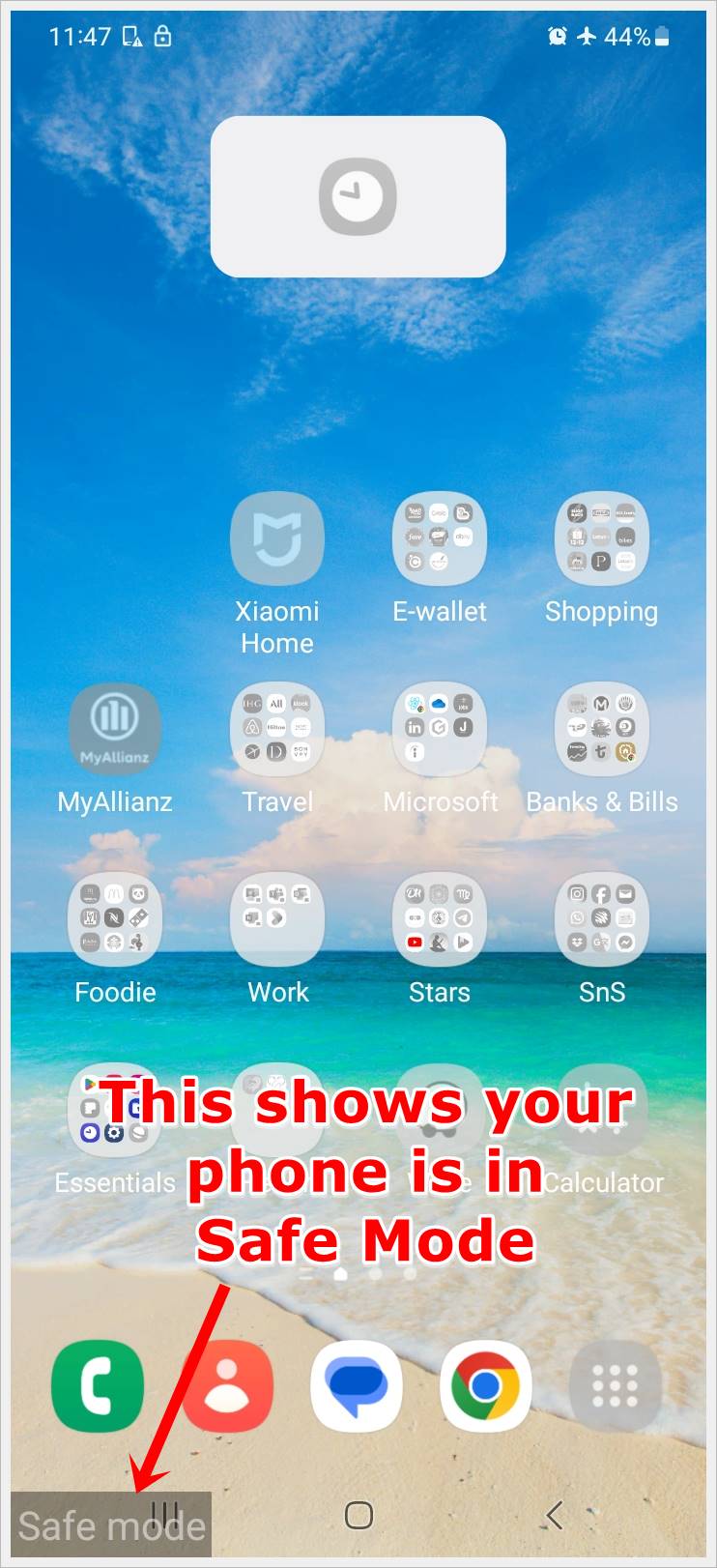
3. Turning On Safe Mode on Samsung Phones with The Buttons
Another method to turn on Safe Mode on Samsung phones is using the phone’s buttons as stated below:
1. Power Off Your Phone: Turn off your Samsung phone using the power button.
2. Power On While Holding Volume Down Button: Turn on your phone while holding down the volume down button. Keep it pressed until the device finishes restarting.
3. Check for Safe Mode: Once restarted, you’ll notice “Safe Mode” in the lower-left corner, indicating successful entry into Safe Mode.
4. Turning On Safe Mode on Other Android Variants
For users with non-stock Android phones or different brand variants:
1. Refer to Device Manual: Consult your phone’s manual or online resources for specific instructions as the process may vary.
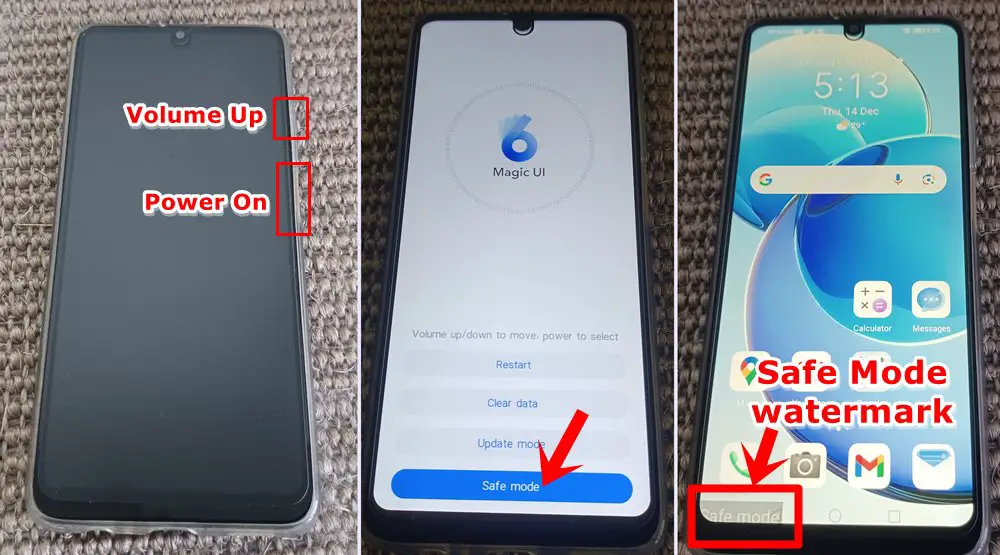
2. Try Common Methods: Attempt the general steps for enabling Safe Mode, such as long-pressing the power-off button during restart, and then, if needed, long-pressing the Volume up or Volume down button.
How to Disable Safe Mode on Android Phones
We’ve discussed how to enable Safe Mode on Android; now, let’s talk about how to disable it. Disabling Safe Mode on your Android phone is as simple as restarting the device. Here’s a quick guide:
1. Press and Hold the Power Button: If your phone is on, power it off by pressing and holding the power button until the power-off screen appears.
2. Tap “Restart” or “Reboot”: On the power-off screen, select the “Restart” or “Reboot” option. This action initiates a normal restart of your phone.
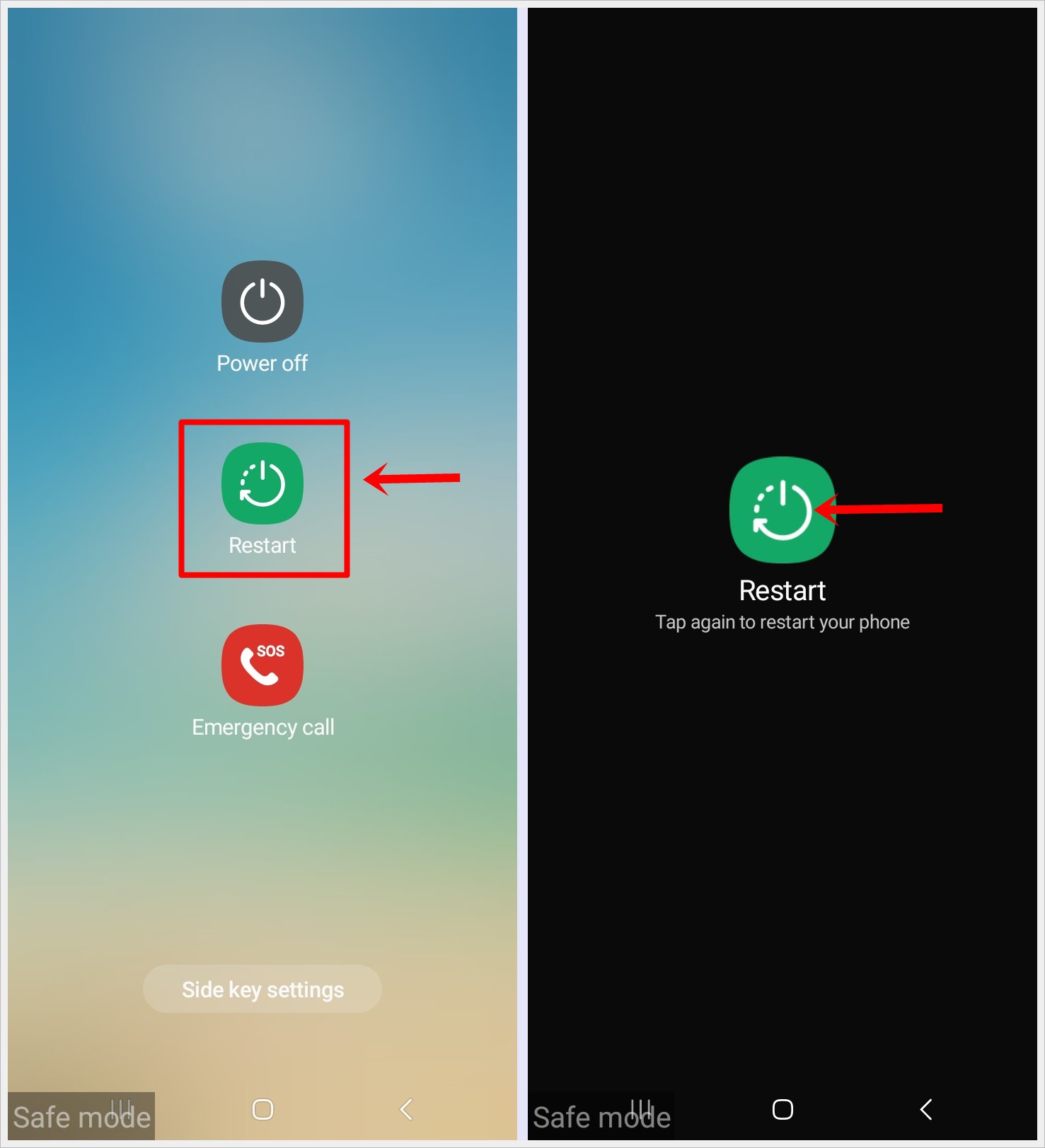
3. Wait for the Restart to Complete: Allow your phone to complete the restart process. Once the device powers up again, it will be in regular mode, free from the constraints of Safe Mode.
4. Confirm Safe Mode is Disabled: Check the screen for any Safe Mode indicators. If none are present, you have successfully disabled Safe Mode on your Android phone.
Troubleshooting Tips in Safe Mode
When your Android phone is in Safe Mode, you have a unique opportunity to troubleshoot and identify the root cause of various issues. Here are some effective troubleshooting tips to make the most of your Safe Mode experience:
1. App Conflicts
Use Safe Mode to detect if a specific third-party app is causing issues. If your problem disappears in Safe Mode, it’s likely that an app is the culprit. Consider uninstalling recently added apps to pinpoint the problematic one.
2. System Software Issues
Safe Mode helps determine whether pre-installed system software is causing problems. If issues persist in Safe Mode, the likely culprit is the core operating system. In such cases, a software update or factory reset may be necessary.
3. Malware Detection

Safe Mode is a useful tool for identifying and removing malware. If your phone exhibits unusual behavior, such as excessive pop-ups or unexpected app behavior, Safe Mode can help isolate and address these security threats.
4. Performance Evaluation
Assess your phone’s performance in Safe Mode. If it runs smoothly without crashes, the issue may be related to third-party apps. On the other hand, if problems persist, it could indicate underlying hardware or system software issues.
5. Temporary Glitches
Sometimes, temporary glitches or conflicts can cause issues such as random restarts or persistent freezing on Android phones. Safe Mode allows you to determine if these problems are persistent or if they resolve themselves once you return to regular mode.
Pro Tip: Accidentally deleted or dismissed a notification? No worries! We have an article that can help you on how to recover deleted notifications on your Android in no time.
Frequently Asked Questions (FAQs)
Q: How can I tell if my Android phone is in Safe Mode?
A: When your phone is in Safe Mode, you’ll typically see a watermark or label on the screen, often in the lower-left corner, indicating “Safe Mode.” Additionally, the appearance of this label is accompanied by limited functionality, with only essential system apps active.
Q: Can I make calls and use all my apps in Safe Mode?
A: In Safe Mode, the functionality of your Android phone is limited. While you can make calls and use essential functions, third-party apps are disabled. Safe Mode is primarily designed for troubleshooting, so its focus is on core system operations.
Q: How do I exit Safe Mode if I no longer need it?
A: Exiting Safe Mode is a straightforward process. Simply restart your phone by pressing and holding the power button, then selecting “Restart” or “Reboot” from the power-off screen. Once your phone completes the restart, it will return to regular mode, and the “Safe Mode” label should no longer be visible.
Wrap Up
This quick guide has equipped you with the essential steps to enable or disable Safe Mode on your Android phone seamlessly. By navigating Safe Mode, you gain a powerful tool to diagnose issues, identify app conflicts, and ensure the smooth operation of your device.
Remember, whether you’re resolving glitches, tackling app-related problems, or simply fine-tuning your Android experience, Safe Mode empowers you to take control. Now that you know how to leverage Safe Mode effectively, unlock the full potential of your Android phone with confidence. Explore, troubleshoot, and enhance your device’s functionality—it’s all at your fingertips!
